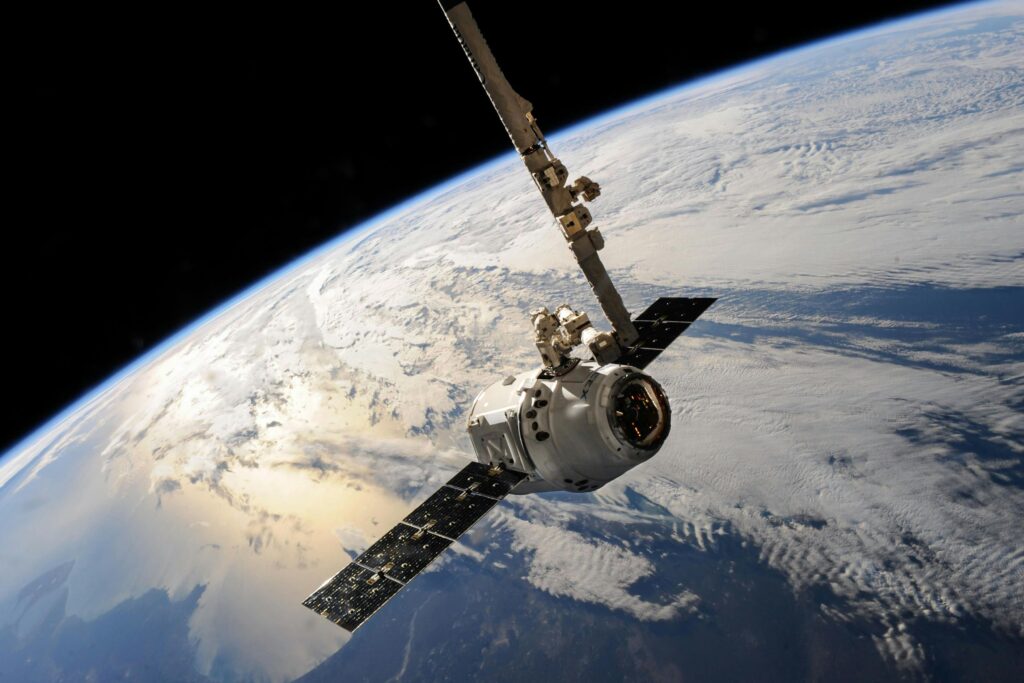In a historic and successful mission, the SpaceX Crew-10 astronauts have safely returned to Earth after spending nearly five months aboard the International Space Station (ISS). The team splashed down in the Pacific Ocean off the coast of Southern California on Saturday, August 9, 2025, marking the end of an eventful mission filled with scientific research, spacewalks, and a milestone landing location.
Historic Splashdown in the Pacific Ocean
This return was particularly significant for NASA, as it was the first Pacific Ocean splashdown for an American crew in 50 years. Most recent returns have occurred in the Atlantic Ocean or Gulf of Mexico, but mission planners chose the Pacific this time to avoid debris risk in populated areas and to ensure safer recovery conditions.
At exactly 11:33 a.m. Eastern Time, the SpaceX Dragon capsule carrying the crew gently landed in calm waters. Recovery ships and helicopters quickly arrived to retrieve the astronauts and transport them for medical checks before their journey back to NASA’s Johnson Space Center in Houston.
Who Were the Crew-10 Astronauts?
The mission was a joint effort involving NASA, Japan’s space agency JAXA, and Russia’s Roscosmos. The crew members were:
- Anne McClain – NASA astronaut and mission commander.
- Nichole Ayers – NASA astronaut and pilot.
- Takuya Onishi – Astronaut from the Japan Aerospace Exploration Agency (JAXA).
- Kirill Peskov – Cosmonaut from Roscosmos.
Together, they represented a truly international collaboration in space exploration.
Five Months of Research and Discovery
During their 146 days in orbit, the Crew-10 astronauts participated in more than 200 scientific experiments and technology demonstrations. Their work covered a wide range of fields, including:
- Medical research to study how long-term space travel affects the human body.
- Microgravity experiments to improve manufacturing techniques and material science.
- Climate and Earth observation to track changes in weather patterns and natural events.
- Technology tests to support future deep-space missions, including Mars exploration.
They also conducted multiple spacewalks to upgrade ISS systems, repair hardware, and install new solar arrays.
Life Aboard the ISS
While life in space may seem glamorous, the astronauts maintained a disciplined routine. They followed strict schedules for exercise, research, maintenance, and communication with ground control. Fitness was especially important—each crew member exercised for nearly two hours daily to prevent muscle and bone loss in microgravity.
Despite the busy schedule, they also made time to interact with school students, share images of Earth from orbit, and celebrate special occasions together.
A Smooth Return and Recovery
Once the Dragon capsule entered Earth’s atmosphere, its heat shield protected the crew from temperatures reaching thousands of degrees. Parachutes deployed during the final descent, slowing the capsule for a safe splashdown.
Recovery teams quickly moved in, lifted the capsule onto the recovery ship, and assisted the astronauts out. Initial medical checks confirmed that all crew members were in good health. After some time to re-acclimate to gravity, they will continue post-mission studies in Houston.
The Bigger Picture for Space Travel
The successful completion of the Crew-10 mission is a testament to the growing capabilities of commercial spaceflight and international cooperation. SpaceX’s Dragon spacecraft has now become a reliable transport system for ferrying astronauts to and from the ISS, reducing dependency on older spacecraft models.
The mission also plays a vital role in preparing for future Artemis missions to the Moon and eventual crewed missions to Mars. Each trip to the ISS provides valuable data about living and working in space for extended periods.
Preparing for the Next Chapter in Space Exploration
The return of the Crew-10 astronauts is not just a moment of celebration but also a strategic step toward shaping the future of space travel. Lessons learned from this mission are already being analyzed by engineers, scientists, and mission planners. Every detail—from the Dragon capsule’s performance during re-entry to the astronauts’ health after long-term exposure to microgravity—provides critical data for improving future missions. This mission also demonstrated the efficiency of international partnerships in solving complex challenges in space, a factor that will be essential for ambitious projects like establishing a sustainable lunar base and planning crewed missions to Mars. SpaceX’s role in providing reliable and reusable spacecraft adds a cost-effective edge to these plans, making frequent missions more feasible. As the world watches, the success of Crew-10 reinforces the idea that space exploration is no longer limited to a few nations—it’s becoming a shared human endeavor with limitless possibilities.
Conclusion
The safe return of the SpaceX Crew-10 astronauts is not just the end of a five-month mission—it’s another milestone in humanity’s journey toward deeper space exploration. Their research will benefit life on Earth and pave the way for future missions beyond low-Earth orbit.
As the capsule floated in the Pacific waters, it symbolized more than just a safe landing; it represented the spirit of exploration, teamwork, and determination that drives space travel forward.




